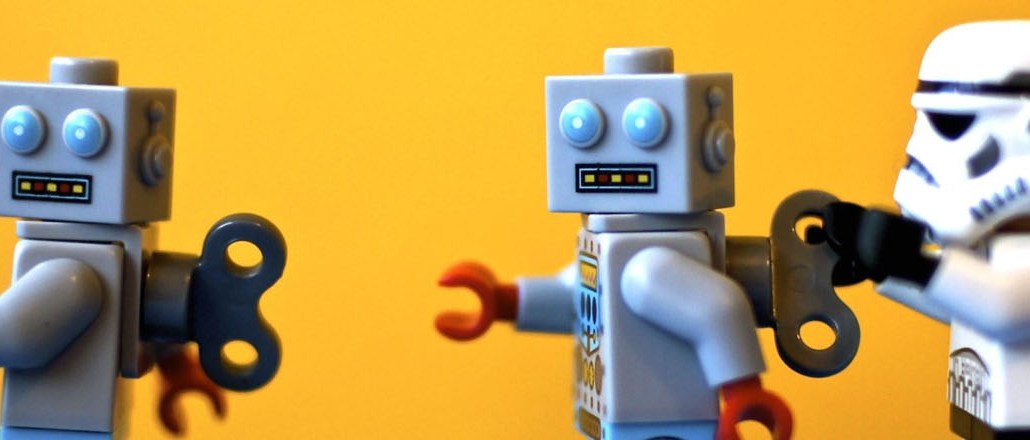Brands as chatty friends: Are chatbots ‘the beginning of a new Internet’?

Craving a taco for lunch? No need to go to your nearest Taco Bell or even download the app. You can just summon TacoBot on messaging platform Slack and even get recommendations while you place your order.
Microsoft’s recent chatbot PR disaster notwithstanding, brands are on the cusp of a bot explosion. Marketers from Dutch Airlines KLM to beauty retailer Sephora are looking to capitalize on the time consumers spend on messaging apps like Facebook Messenger, Kik and Slack by developing their own automated messaging interfaces — which enable everything from financial transactions to personalized beauty tutorials.
“The speed to adoption is being compressed right now,” said Pete Sena, founder at agency Digital Surgeons. “Brands know now that the No. 1 thing that they can compete on is experience — and chatbots, done properly, can really add value there.”
It is also an opportunity for brands to come off as more than a mere service provider, as a knowledgeable friend too, said Ben Kosinski, head of The Collaboratory at iCrossing. “It’s smart for the brand to go where the users are and create a presence on these platforms, while providing relevant and personalized one-to-one conversations with consumers.”

‘Chat apps will be new Internet, chatbots the new websites’
Messaging apps are seeing least 1.4 billion monthly users — usually skewing young and tech savvy — collectively worldwide. Increasingly, brands have seen in apps like WhatsApp, Kik, WeChat and Line an attractive opportunity to engage with their audiences on a one-on-one level. In the U.S. alone, half of the mobile phone users will be using mobile messaging by the end of 2016, with the top four messaging apps currently sharing 3 billion users between themselves.
“Chat apps will come to be thought of as the new browsers; bots will be the new websites,” said Ted Livingston, founder of Kik. “This is the beginning of a new Internet.”
Livingston isn’t just tooting his own horn. More than 80 advertisers have already worked with Kik over the past year to set up chatbots on its network of 275 million users. On Tuesday, the platform launched its own bot store. There are a number of third-party bots on chat app Telegram and Slack. Swyft Media and Snaps have also “executed a handful” of chatbots for their brand clients, and speculation is rife that Facebook will launch a bot store at F8, its developer conference next week.
On WhatsApp, for example, shoe brand Clarks created three virtual characters to promote its new product, the “Desert Boot,” allowing users to chat with them and receive messages, videos and music playlists. Passengers flying Dutch Airlines KLM can get their boarding passes directly through Facebook Messenger. In Japan, beauty brand HABA frequently offers coupons on the messaging app Line. Sephora has created a personalized experience for its customers on Kik, including a quiz whose answers it uses to tailor appropriate content and products for its users.
“We know, based on global trends and the evolving landscape, this is the next element to engage with our customers on,” said Bindu Shah, Sephora’s vp of digital marketing. “We can let clients ‘choose their own adventure’ with our content, rather than posting content that goes into a ‘newsfeed river.’ We believe more brands will want to interact this way too.”
‘Consumers are ready’
Chatbots are being embraced at an unprecedented rate because they are easy to build, scalable — since they can be powered across a range of platforms — and are both useful and promotional, said Christian Brucculeri, CEO and director at Snaps. The future of branded bots, he said, will be brands “owning” areas and “offering smart utilities. “A grocer or a food brand, for instance, could develop a recipe generator bot, so all one has to do is type the name of an ingredient, and get a bunch of recipe recommendations.”
Chatbots have also seen several previous iterations. But one of the biggest reasons for chatbots gaining momentum now is that the tech is there and the app ecosystem has lost its charm for marketers. Not too long ago, brands and marketers invested heavily in mobile apps, but consumers are spending nowhere close to as much time on them as marketers had expected. It isn’t an easy feat getting them to download them either. Further, with organic engagement becoming extinct on social, this is a new avenue for them to game before any algorithmic changes.
“It’s the Wild West the way social was the Wild West in 2009-2010,” said Victor Piniero, svp of social media at Big Spaceship. “Brands have tried emojis and sticker keyboards, and now they think chatbots might be the next way in. Right now, it’s an interesting time for some testing and learning until they learn what actually works when it comes to consumers being OK with interacting with brands one-to-one.”
Chatbots, on the other hand, not only reduce friction in a customer’s journey to complete a purchase but, above all, are opt-in experiences, said Evan Wray, founder and CEO at Swyft Media. While initial discoverability of the chatbot may pose a challenge, they hold out the promise of giving consumers access to content they want, he said. That way, they would be aware of opting in to such an experience.
“You’re not going to buy a New York Knicks t-shirt unless you’re a fan, and so when you get an email after buying that t-shirt, you won’t mind that,” he said. “Similarly, if I download a Burger King branded sticker keyboard, I won’t mind a Burger King bot sending me the latest promotion. We see less than a 10 percent drop-off rate in such cases.”
With that permission also comes a higher set of expectations, said Vincent DiBartolo, vp of technology at Big Spaceship. Users know that as they interact with these bots, brands have access to swaths of data about them and will therefore expect increasing personalization. There’s only so much leeway a brand is going to get as far as chatbots are concerned. “Consumers weren’t ready earlier to talk to automated robots earlier, but now they are,” he said.
‘The human connection is still paramount’
Still, not everyone is on board. Brands that forcefully insert themselves into a space they’re not inherently welcome in can turn off audiences. They also risk oversaturating a fad (branded emojis, anyone?). And of course, no one wants to end up like Microsoft, which saw its algorithmical-learning bot Tay hacked into an anti-feminist Hitler apologist.
“Most scenarios are repeatable, and could be managed solely by chatbots,” such as ordering a taco or booking a flight, said Puneet Mehta, founder and CEO of Msg.Ai. “But situations will arise that are more sensitive and would require human input. Brands must be able to stitch together in real-time human and AI interaction in order to provide the optimal user experience.”
That is why some brands, like Hyatt and British retailer Tesco to name a few, are steering clear of chatbots — at least as of now. They aren’t opposed to automating certain functions, per se, but feel that when it comes to things like customer service, the human connection is key. Hyatt, for instance, started using Facebook Messenger to help guests with their customer service needs — but that is managed by Conversocial and Hyatt’s own dedicated social services team of 60 employees.
“We have no plans to introduce chatbots at Tesco,” said James Gough, operations manager of social media and Web chat at Tesco. “We use real people to engage with our customers and look to add personality into our conversations.”
For Hyatt as well, building long-term personal relationships with its guests is key. And while it wants to cut down costs and bring in more technology, it doesn’t want to lose that personalization and authenticity. “The authentic, human connection we offer through our around-the-clock social care is something our guests find valuable,” a Hyatt spokesperson said.
Perhaps this is why even brands that are bullish on chatbots are still exercising some restraint in their approaches, ensuring that their content fits the channel and that the client experience is at the center of their strategy.
“When using chatbots, brands should focus on a ‘pull’ model where the chatbot is facilitating a conversation and client discovery,” said Sephora’s Shah, “not pushing their marketing messages or agenda.”
More in Marketing

Agencies have mixed feelings about using AI tools for product placements and influencer marketing
By now, spotting influencers in major ads and at events is all but mainstream — but what if artificial intelligence allowed influencers to tap into old-school product placement without actually having to shoot in person with brands?

What marketers need to know about Zepeto, the Korean metaverse platform
Due to its increased focus on individuals’ avatars and their appearances, the culture of Zepeto revolves heavily around virtual fashion.

Marketing Briefing: As corporate America fosters a closer relationship with Trump, marketing will remain neutral
President Trump’s second term will be different from his first. It seems his relationships with the media, tech and marketing industries already show as much.





